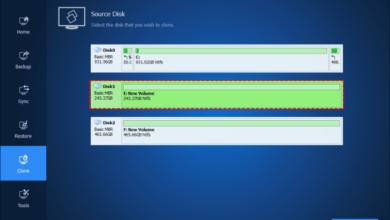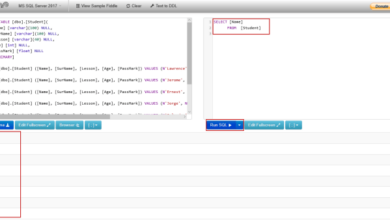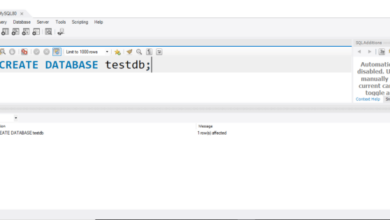Relational Database vs NoSQL: Choosing the Right Tool
Relational Database vs NoSQL: a battle of titans in the world of data management. Both have their strengths and weaknesses, making the choice depend on your specific needs. Imagine building a house: you wouldn’t use the same tools for laying the foundation as you would for painting the walls.
Similarly, choosing the right database depends on the structure of your data, the queries you’ll be running, and the scale of your project.
Relational databases, like the stalwart brick-and-mortar of the data world, excel at structured data, enforcing consistency and integrity. NoSQL, on the other hand, is the adaptable and scalable modern construction, perfect for handling unstructured data and rapid growth. Let’s delve deeper into the characteristics of each and see how they measure up.
Relational Databases vs. NoSQL Databases
The world of databases is vast and diverse, with two major paradigms dominating the landscape: relational databases (RDBMS) and NoSQL databases. These approaches offer distinct advantages and cater to different data storage and retrieval needs. This blog post delves into the fundamental differences between these two database types, explores their historical origins, and provides real-world examples of their common applications.
Fundamental Differences
The key difference between relational databases and NoSQL databases lies in their data models and the way they handle data relationships.
- Relational Databases (RDBMS):RDBMS use a structured data model based on relational algebra, where data is organized into tables with rows and columns. Relationships between data are defined through foreign keys, ensuring data integrity and consistency. They are known for their ACID properties (Atomicity, Consistency, Isolation, Durability), guaranteeing reliable transactions and data accuracy.
- NoSQL Databases:NoSQL databases, on the other hand, offer more flexibility in terms of data structure and schema. They can handle diverse data types, including structured, semi-structured, and unstructured data. NoSQL databases are typically designed for scalability, performance, and availability, often sacrificing ACID properties for these benefits.
Historical Overview
The evolution of database technologies can be traced back to the early days of computing.
- Relational Databases:The concept of relational databases was formalized in the 1970s by E.F. Codd, who proposed the relational model. The first commercial RDBMS, System R, was developed at IBM in the 1970s. The 1980s saw the rise of popular RDBMS systems like Oracle, SQL Server, and MySQL, which continue to dominate the enterprise database market.
- NoSQL Databases:NoSQL databases emerged in the late 2000s and early 2010s, driven by the increasing demand for scalable and flexible data storage solutions to handle the explosion of data generated by web applications and social media platforms. Notable early examples include MongoDB, Cassandra, and Redis.
Real-World Examples
The choice between relational and NoSQL databases depends on the specific requirements of the application. Here are some common use cases for each database type:
Relational Databases
- E-commerce Platforms:Relational databases are well-suited for managing customer data, product catalogs, orders, and inventory, ensuring data consistency and integrity.
- Financial Institutions:Banks and other financial institutions rely on RDBMS to store and manage sensitive financial data, transactions, and customer accounts.
- Enterprise Resource Planning (ERP) Systems:ERP systems use relational databases to store and manage data related to various business functions, such as finance, human resources, and supply chain management.
NoSQL Databases
- Social Media Platforms:NoSQL databases excel at handling large volumes of user data, posts, and interactions, allowing for rapid scaling and high availability.
- Content Management Systems (CMS):CMS platforms use NoSQL databases to store and manage dynamic content, user profiles, and comments, facilitating content updates and user engagement.
- Real-Time Analytics:NoSQL databases are often used for real-time data analysis, such as tracking website traffic, monitoring user behavior, and generating personalized recommendations.
Relational Databases (RDBMS)
Relational databases are a type of database management system (DBMS) that stores data in tables with rows and columns. They are based on the relational model, which uses mathematical concepts to organize and access data.
Core Concepts of Relational Databases
Relational databases are structured around the concept of relations, which are essentially tables. Each table consists of rows and columns.
- Rows: Rows represent individual records or entities. For example, in a table of customers, each row would represent a single customer.
- Columns: Columns represent attributes or properties of the entities. In the customer table, columns might include attributes like customer ID, name, address, and phone number.
- Primary Keys: Primary keys are unique identifiers for each row in a table. They ensure that each record is distinct and can be easily referenced. For example, a customer ID could be used as the primary key in the customer table.
- Foreign Keys: Foreign keys are columns that reference primary keys in other tables. They establish relationships between different tables. For instance, an order table could have a foreign key that references the customer ID in the customer table, linking orders to specific customers.
- Relationships: Relationships define how different tables are connected. Common types of relationships include one-to-one, one-to-many, and many-to-many. For example, a customer might have multiple orders (one-to-many relationship), and multiple customers might order the same product (many-to-many relationship).
Advantages of Relational Databases
Relational databases offer several advantages that make them suitable for various applications:
- Data Integrity: The relational model ensures data integrity through constraints like primary keys, foreign keys, and data types. These constraints prevent inconsistencies and ensure that data is accurate and reliable.
- ACID Properties: Relational databases adhere to the ACID properties: Atomicity, Consistency, Isolation, and Durability. These properties guarantee that transactions are executed correctly and reliably.
- Query Optimization: Relational databases use query optimizers to efficiently retrieve data. They analyze queries and choose the most efficient execution plan, resulting in faster data access.
Designing a Relational Database Schema for an E-commerce Website
Here is a simple relational database schema for an e-commerce website:
| Table Name | Columns |
|---|---|
| Customers | customer_id (primary key), name, email, address, phone_number |
| Products | product_id (primary key), name, description, price, category |
| Orders | order_id (primary key), customer_id (foreign key), order_date, total_amount |
| Order_Items | order_item_id (primary key), order_id (foreign key), product_id (foreign key), quantity |
This schema defines four tables: Customers, Products, Orders, and Order_Items. The Customers table stores customer information, Products stores product details, Orders stores order information, and Order_Items stores details of individual items within each order. Foreign keys are used to establish relationships between tables, allowing us to retrieve related data efficiently.
For example, we can join the Orders and Customers tables using the customer_id foreign key to get the customer information associated with each order.
NoSQL Databases
NoSQL databases, a departure from traditional relational database management systems (RDBMS), have emerged as a powerful alternative for handling the complexities of modern data. These databases, often referred to as “Not Only SQL,” are designed to accommodate diverse data models and cater to the unique demands of large-scale, distributed applications.
Key Characteristics of NoSQL Databases
NoSQL databases are distinguished by their flexible schema, high scalability, and high availability, making them well-suited for handling large datasets and dynamic data structures.
- Schema Flexibility:NoSQL databases embrace a schema-less or flexible schema approach, allowing data to be stored in various formats without rigid pre-defined structures. This flexibility simplifies data modeling and enables easy adaptation to evolving data requirements.
- Scalability:NoSQL databases excel in scalability, enabling horizontal scaling by distributing data across multiple servers. This distributed architecture allows for efficient handling of massive data volumes and high user traffic, a crucial advantage for applications experiencing rapid growth.
- High Availability:NoSQL databases prioritize high availability, ensuring continuous data access even during server failures or maintenance. They achieve this through data replication and fault tolerance mechanisms, guaranteeing uninterrupted operations and data integrity.
Types of NoSQL Databases
NoSQL databases encompass various types, each optimized for specific data structures and use cases. Understanding these distinctions helps in choosing the right database for a given application.
| Type | Description | Examples |
|---|---|---|
| Document Databases | Store data in JSON-like documents, offering flexibility and ease of use. | MongoDB, Couchbase, Amazon DocumentDB |
| Key-Value Databases | Organize data as key-value pairs, ideal for simple data storage and retrieval. | Redis, Memcached, Amazon DynamoDB |
| Graph Databases | Represent data as nodes and edges, effectively modeling relationships between entities. | Neo4j, OrientDB, ArangoDB |
| Column-Family Databases | Store data in columns, enabling efficient access to specific data attributes. | Cassandra, HBase, ScyllaDB |
Benefits of Using NoSQL Databases
NoSQL databases offer numerous benefits, particularly for applications dealing with large datasets, unstructured data, and real-time requirements.
Choosing between a relational database and NoSQL can be a tough decision, especially when you’re just starting out. It’s tempting to go for the big-name, high-margin solutions, but remember, don’t knock low-margin startups – they often offer incredible value and flexibility.
Just like a lean startup can disrupt a market, a well-chosen NoSQL database can be just as powerful for your project, especially if you’re dealing with large volumes of unstructured data.
- Handling Large Datasets:NoSQL databases excel in handling large datasets due to their horizontal scalability and distributed architecture. They can efficiently store and retrieve vast amounts of data, making them ideal for big data analytics and applications involving massive data volumes.
- Unstructured Data:NoSQL databases are well-suited for managing unstructured data, such as text, images, and multimedia content. Their flexible schema allows for storing diverse data formats without rigid constraints, making them valuable for applications dealing with complex data structures.
- Real-Time Applications:NoSQL databases prioritize high availability and low latency, making them suitable for real-time applications such as social media platforms, e-commerce websites, and online gaming. Their ability to handle high write volumes and deliver quick responses is crucial for such dynamic environments.
Choosing between a relational database and NoSQL is a bit like picking your watercolor technique – both have their strengths. If you need structured data and complex queries, a relational database is your go-to. But if you’re working with unstructured data, like social media posts or user activity, a NoSQL database might be a better fit.
Just like mastering 5 easy watercolor techniques can elevate your art, understanding the nuances of each database type can improve your application’s performance and scalability.
Key Differences: Relational Database Vs Nosql
Relational databases and NoSQL databases have distinct approaches to data modeling and offer different performance characteristics. Understanding these differences is crucial for choosing the right database for a specific application.
Data Modeling Approaches
Relational databases use a structured approach to data modeling, organizing data into tables with rows and columns. Each table represents a specific entity, and relationships between entities are defined through foreign keys. This structured approach ensures data integrity and consistency.
In contrast, NoSQL databases offer flexible data models, allowing data to be stored in various formats, such as key-value pairs, documents, or graphs. This flexibility allows for more dynamic and unstructured data storage, accommodating evolving data requirements.
Performance Trade-offs, Relational database vs nosql
Read/Write Speed
Relational databases generally prioritize data consistency and integrity, leading to slower write operations compared to NoSQL databases. However, their structured nature allows for efficient read operations, especially when querying data using complex joins. NoSQL databases, on the other hand, prioritize speed and scalability, offering faster write operations due to their flexible data models.
However, read operations can be slower, especially when querying data that is not indexed or when dealing with large datasets.
Scalability
Relational databases can be challenging to scale horizontally, as adding new servers often requires complex data partitioning and replication strategies. NoSQL databases are designed for horizontal scalability, allowing for easy distribution of data across multiple servers. This makes them suitable for applications with high-volume data and high-traffic demands.
Consistency
Relational databases prioritize strong consistency, ensuring that all data changes are reflected across all replicas immediately. This provides a consistent view of data but can impact performance. NoSQL databases offer various consistency models, ranging from strong consistency to eventual consistency.
Choosing between a relational database and NoSQL is a decision that depends on your specific needs, just like choosing the perfect gift for a child. If you’re looking for something unique and supporting a great cause, check out 100 black owned kids shops.
Similarly, when deciding on a database, consider whether you prioritize structured data and complex queries or flexibility and scalability. Each database type has its strengths and weaknesses, and the right choice depends on your application’s requirements.
Eventual consistency prioritizes speed and scalability but may lead to inconsistencies in data during updates.
Strengths and Weaknesses
| Feature | Relational Databases | NoSQL Databases |
|---|---|---|
| Data Integrity | Strong | Can vary depending on the NoSQL model |
| Consistency | Strong | Can range from strong to eventual |
| Flexibility | Limited | High |
| Scalability | Challenging | Excellent |
Choosing the Right Database
The decision of whether to use a relational database (RDBMS) or a NoSQL database is a crucial one for any application. It depends heavily on the specific needs of your application and the nature of the data you’re working with.
Choosing the wrong database can lead to performance issues, scalability bottlenecks, and increased development complexity.
Factors to Consider When Choosing a Database
The following factors are essential to consider when deciding between relational and NoSQL databases:
- Data Structure: Relational databases excel at storing structured data in tables with defined schemas, enforcing data integrity and consistency. NoSQL databases, on the other hand, offer flexibility in handling semi-structured or unstructured data, making them suitable for applications with evolving data models or diverse data types.
- Query Patterns: Relational databases are optimized for complex queries with joins and aggregations, leveraging SQL’s expressive power. NoSQL databases, often designed for specific use cases, might have limited query capabilities or require specialized query languages.
- Scalability Needs: NoSQL databases are generally more scalable horizontally, meaning they can easily distribute data across multiple servers. Relational databases, while scalable, often require more complex sharding strategies for horizontal scaling.
- Consistency Requirements: Relational databases prioritize ACID properties (Atomicity, Consistency, Isolation, Durability), ensuring data integrity and reliability. NoSQL databases often prioritize availability over consistency, offering different consistency models like eventual consistency.
Real-World Examples of Database Usage
Here are some real-world examples of how different applications leverage the strengths of relational and NoSQL databases:
- E-commerce Platforms: E-commerce platforms often use relational databases to manage customer data, order details, and product information. These applications require strong data integrity and ACID properties to ensure accurate financial transactions and reliable inventory management.
- Social Media Applications: Social media applications, with their dynamic content and user interactions, frequently utilize NoSQL databases for their flexibility and scalability. These databases can handle large volumes of unstructured data, such as user posts, comments, and likes, efficiently.
- IoT (Internet of Things) Applications: IoT applications often generate massive amounts of sensor data in real-time. NoSQL databases, with their ability to handle high-volume data streams and support various data formats, are well-suited for these scenarios.
Future Trends
The landscape of database technology is constantly evolving, driven by the increasing volume and complexity of data. Emerging trends are shaping the future of relational and NoSQL databases, leading to new ways of storing, managing, and accessing data.
Cloud-Based Databases
Cloud-based databases offer a flexible and scalable solution for managing data in the modern era. They provide several advantages, including:
- Scalability:Cloud databases can easily scale up or down based on changing data requirements, eliminating the need for manual infrastructure management.
- Cost-Effectiveness:Pay-as-you-go pricing models make cloud databases cost-effective, especially for businesses with fluctuating data needs.
- High Availability:Cloud providers ensure high availability through redundant systems and automatic failover mechanisms, minimizing downtime.
Examples of popular cloud-based databases include Amazon Aurora, Google Cloud Spanner, and Microsoft Azure Cosmos DB. These services offer both relational and NoSQL database options, catering to diverse data management needs.






